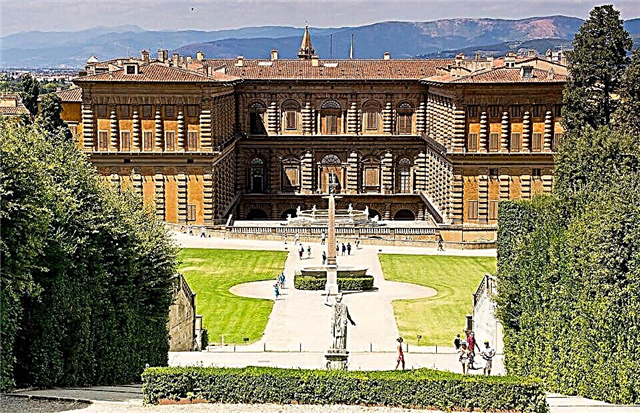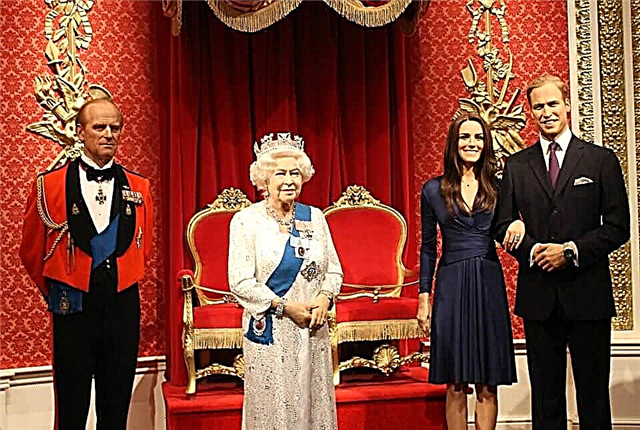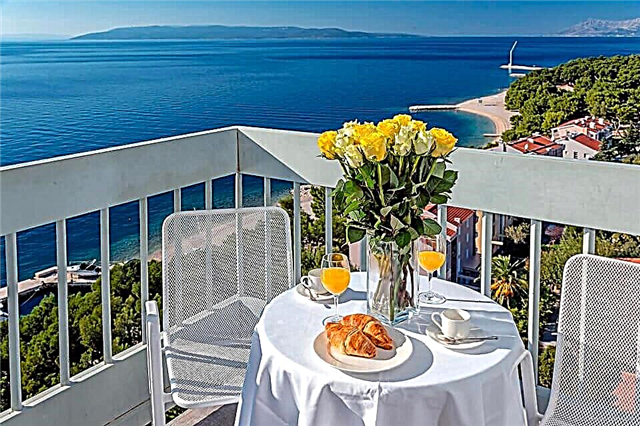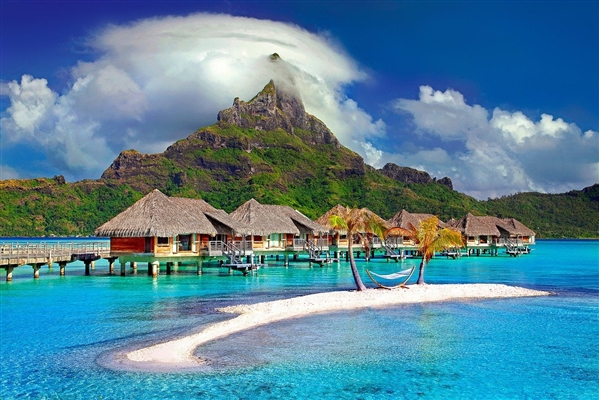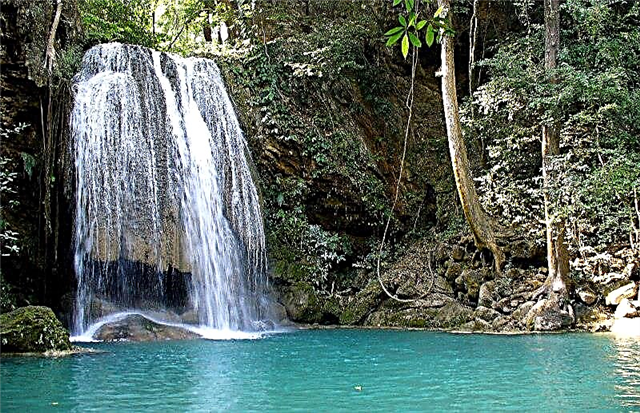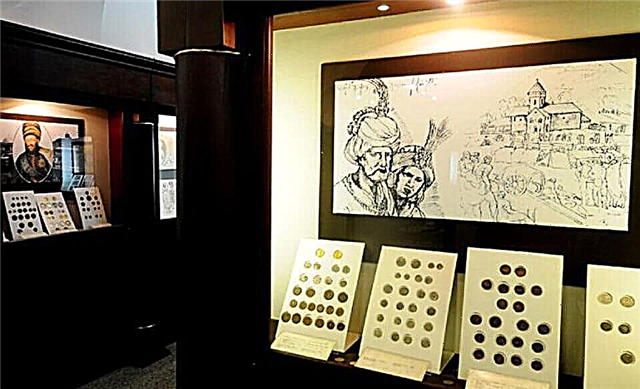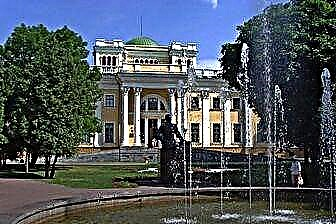The main tourist sites cannot boast of a long history. For the most part, they appeared in the past and the century before last, but have already managed to win the love of the public. The Gomel palace and park ensemble is especially notable, which includes many interesting objects, including the Rumyantsev-Paskevich Palace and the Winter Garden. The surrounding park area, the nearby beach and the promenade are the main places for recreation for both locals and tourists.
Gomel went through the trials of the Second World War, was partially damaged and was rebuilt. Despite all the upheavals, he was able to preserve the grains of his history and allowed them to blossom in all their splendor already in modern times. Every year new monuments and museums are opened, and the collections of old ones are replenished.

The best hotels and hotels at affordable prices.
from 500 rubles / day
What to see and where to go in Gomel?
The most interesting and beautiful places for walking. Photos and a short description.
Gomel palace and park ensemble
At the same time a natural monument and an architectural monument. Located on the right bank of the Sozh River. The main objects: the settlement of the X-XVIII centuries, the palace of the Rumyantsevs and Paskevichs, the Peter and Paul Cathedral, the chapel-burial vault of the Paskevich family, the Winter Garden. The park area is 34 hectares. There are many exotics among 5 thousand trees. The Swan Pond divides the park into two parts, in the northern part there are amusement rides.

Palace of the Rumyantsevs - Paskevichs
Land for the construction of the palace was granted to Count Rumyantsev by Empress Catherine II. At the end of the 18th century, the work was completed. The style is neoclassicism. The palace was rebuilt, and new iconic objects appeared around. In 1934, Count Paskevich bought it. An extensive park was laid out under him. In the 90s, the building of the palace became the property of the museum. It is considered the main attraction of Gomel.

Peter and Paul Cathedral
It was built from 1809 to 1819 in the possession of Count Rumyantsev. Currently it is part of the palace and park ensemble. The first closure took place in the post-revolutionary years. During the occupation, services were resumed. The second closure dates back to the 60s. For almost 20 years, a planetarium has been operating inside. Now it is a working temple. Relics: relics of the Monk Manetha of Gomel and Saint Nicholas.

Chapel-burial vault of the Paskevich family
Built near the Peter and Paul Cathedral in 1889. The remains of some members of the Paskevich family were brought here, including Ivan Fedorovich, who bought these lands from the Rumyantsevs. A total of 8 people found peace here. The tomb is made in the pseudo-Russian style and resembles a small fairytale tower or castle. Burials are located underground. The entrance to the crypt is through a pavilion erected nearby.

Observation tower
It is located in the southern part of the palace and park ensemble. It was originally a chimney for a sugar factory. When the building was converted into the Winter Garden, the reconstruction also affected the tower. Including the spire, its height is 40 meters, so the site turned out to be suitable for an observation deck. You can climb to the very top by a spiral staircase with 204 steps. In 2015, it was reopened.

Winter Garden
Created on the basis of a greenhouse that belonged to Paskevich. In 1877, they began to transform it into the Winter Garden, for which a sugar factory workshop was taken over. The interior decoration is natural minerals, which made it possible to obtain a living carpet from overgrown climbing plants. During the Second World War, the premises were hardly damaged. Now the garden contains a collection of 18 species of representatives of the flora of the subtropics.

Hunting lodge
It is recognized as an architectural monument of the early 19th century. Served as a summer residence for Rumyantsev. At the same time, the count did not like hunting, and the name is probably associated with its location on the outskirts of the city. Since 2009, the exposition of the Museum of the History of Gomel has opened in the house. The collection is located in 7 rooms. Some rooms have been recreated as they were under Rumyantsev. Here you can hold photo sessions and wedding ceremonies.

Branch of the Vetka Museum
Opened in 2008. The exposition is divided into 4 large exhibitions: "Thing as a text of spiritual culture", "Masterpiece", "Living Craft" and "Man of Tradition". Each has its own separate room. Among others, the "Masterpiece" stands out, since there is only one object at a time. Exhibits - folk art of all directions. This includes towels, national clothes, hand-made books and even icons.

Gomel Museum of Military Glory
The exposition was opened in two stages. The first came in 2004 and was timed to coincide with the 60th anniversary of the country's liberation from the Nazis. The museum complex was fully operational in a year. 2 floors with 8 halls tell the story of the military glory of the city and Belarus. 35 pieces of military equipment, including tanks and aircraft, are on display in the open air. On the basis of this museum, the Museum of Forensic Science was established in 2010.

Museum of Forensic Science
Created on the basis of the Museum of Military Glory in 2010. Its main goal is to popularize the interesting and socially important profession of the criminalist. The exposition covers the period from 1917 to the present day. Among the exhibits there was a place for the attributes of militiamen of different years. Constantly improving technical means are also presented. Meetings are held between practicing forensics and schoolchildren.

Museum of the History of Printing and Photography
It opened in 2017 at the initiative of the local press. All Gomel publications, one way or another, took part in the formation of his collection. Exhibits include printing devices, archival photographs, old black-and-white newspaper pages and brightly colored posters. During the excursion, tourists are invited to get acquainted not only with the history of printing and photography, but also go through the past of modern Gomel media.

Picture gallery of G. Kh. Vaschenko
The collection of works of art is named after the outstanding Belarusian artist. Gabriel Vaschenko donated 50 of his works to the gallery. Subsequently, his wife added 70 paintings by Russian masters to the collection. Currently, about 400 paintings are exhibited here. They are distributed between two exhibition areas. In addition, the gallery also hosts temporary exhibitions.

Gomel Drama Theater
It has existed since 1954. The building is classic for post-Soviet theaters - with stucco moldings, decorative details and large columns at the entrance. The troupe toured the country and visited Russia. Every three years the theater hosts “Slavic Theater Meetings”. The hall can accommodate just under 500 people. In 2005, the reconstruction of the premises was completed. The renovation also affected the porch and the facade.

Puppet Theatre
Founded in 1968 by Viktor Chernyaev, who led the troupe for the next 20 years. The theater received the House of Culture at its disposal in 2002, and 5 years later it was restored. At the entrance there are small sculptures illustrating familiar fairy tales from childhood. Among the performances there is a place not only for recognized world works, but also for Belarusian fairy tales.

Gomel State Circus
The first circus corpse performed in a wooden building on Horse Square since 1890. Several moves, the transfer of premises to the theater and even a fire led to the need to build a permanent, solid house for the circus. It was ready by 1972. The auditorium is designed for one and a half thousand seats. Nearby since 2006 there is a fountain with illumination, working several months a year, and a monument to the clown Pencil.

St. Nicholas Monastery
Founded in 1994. The base for the male monastery was the temple of the same name, which was built back in 1904.There is a gate church, and the courtyard is located in the village of Teryukha. The brethren adhere to the charter of the Trinity-Sergius Lavra. Relics: the myrrh-streaming icon of St. Nicholas, the venerated copy of the Kozelshchansk Icon of the Mother of God and the icon of St. John of Kormiansky with a particle of relics.

Holy Tikhvin monastery
It is feminine and traces its history, which was interrupted several times, since the end of the 19th century. It has existed in its current form since 1993. The nuns teach Sunday school. The monastery has an icon painting workshop and a sewing workshop. Relics: a list of the icon of the Tikhvin Mother of God and the relics of the Chernigov saints. A holy spring belongs to the monastery, near which baths and a chapel are built.

Elias Church
Monument of Belarusian wooden architecture of the second half of the 18th century. The complex consists of 3 log cabins: a woman’s blockhouse, a middle blockhouse, an altar adder. In the past, there was a mixed hermitage for men and women near the Old Believers' church. It is believed that Emelyan Pugachev came here to pray. Although the temple was closed several times in the 19th century, it remained operational during the Soviet period.

Baumansky bridge
Pedestrian bridge over the Sozh river. There were already several bridges in the city, including floating ones. But a large pedestrian was needed, as more and more vacationers wanted to get to the beach from the park area. And people from the suburbs could use it to get to work. The building was opened in 1970. Since its height and span allowed it, shipping remained the same intense.

Sozh river and embankment
493 out of 648 km of the Sozh River flows through Belarus. There are several cities on it, including Gomel. It is partly navigable and its waters are some of the cleanest in Europe. The improvement of the city embankment is associated with the names of prominent local figures Rumyantsev and Paskevich. In the immediate vicinity there is a palace and park complex. During the walk, tourists get acquainted with the monuments of archeology and nature.




